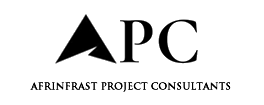
Retha Swanepoel, head of the BIM & Design Systems team and partner at Foster + Partners, discusses her career highlights and predictions for the future of BIM with Women in BIM (WIB)
Retha leads Foster + Partners’ growing team of BIM and design systems experts and promotes the practice-wide BIM strategy. She qualified from the University of the Witwatersrand in Johannesburg, South Africa, with a professional Masters in Architecture.
Retha’s career began in South Africa, working across high-end residential, mixed-use and healthcare projects before moving to London in 2008. She spent almost 15 years at Gensler, focusing on commercial developments across various practice areas and global locations, evolving into integrated digital design and BIM management and later leading BIM implementation across Europe as regional design technology manager. Retha managed some of the largest projects at Gensler, working in partnerships with the core teams on projects to ensure technical delivery.
Today at Foster + Partners, Retha oversees a team spanning BIM and design systems operations, digital delivery, technology/computational design, technical support and career development, ensuring alignment with the practice’s goals for digital transformation and sustainability. The team plays a critical role in coordinating information, enhancing workflows and driving innovation in digital design processes.
Q1: What attracted you to a career in the AEC industry?
RS: I never imagined I would end up in the AEC industry, as my first passion was for music. Initially, I intended to pursue a career in music. However, I found myself drawn to architecture. I became fascinated with the discipline’s ability to shape environments and impact lives, which led me to pursue three degrees in the subject.
While studying, I worked professionally, building physical architectural models, which deepened my appreciation for how things come together. That hands-on experience naturally evolved into an interest in digital workflows, where models become centralised data hubs that drive decision-making throughout a project’s lifecycle.
Today, my role is about ensuring that our teams work in a structured, efficient way to enhance collaboration across disciplines. BIM has given us the ability to connect design intent with execution, ensuring accuracy, efficiency and better sustainability outcomes.
Our team’s focus is not just on creating digital models but on leveraging information to improve project outcomes, streamline coordination and make smarter design decisions. This intersection between technology, problem-solving and design innovation is what keeps us engaged and constantly evolving.
What attracts many of us to this field – and keeps us engaged – is the opportunity to solve complex problems collaboratively, using technology to make projects more efficient, sustainable and well-coordinated.
Q2: What currently inspires you and excites you the most about working in the built environment?
RS: Being part of and helping grow the BIM & Design Systems team at Foster + Partners is both a privilege and a rewarding challenge. With over 100 team members, our approach is unique within the industry, especially in how we integrate with the other technology teams and in partnership with all the specialist groups across the practice.
Our team plays a crucial role in the successful delivery of projects, acting as the backbone for coordinating information across disciplines. By ensuring the availability of a single source of truth, we enable seamless collaboration between architects, engineers, consultants, contractors and clients. This approach ensures that project information is coordinated, accessible and reliable, allowing for more efficient workflows and supporting decision-making with insights into cost, schedule and sustainability.
What excites me most is how design technologies are transforming the industry. We are at an exciting crossroads where data-driven decision-making and AI technologies are reshaping how we design, construct and operate buildings. The integration of smart buildings, proptech and contech is accelerating, enabling us to optimise energy performance and focus on sustainability in ways we never have before.
I’m also inspired by the growing commitment to inclusivity and collaboration in the industry. Creating a supportive and empowering work environment where teams collaborate towards shared goals not only leads to better design outcomes but also fosters a more welcoming space for diverse talent.
Q3: What has been a career highlight for you?
RS: One of my greatest career highlights has been leading the development of BIM strategies that drive better project outcomes across global teams. It is incredibly rewarding to see how structured information management reduces errors, enhances collaboration and improves efficiency on major projects.
Stepping into my role as partner and head of BIM & Design Systems at Foster + Partners has also been a defining moment. Leading a globally recognised firm’s digital transformation and BIM strategy is both a privilege and a challenge. Our team’s work is at the forefront of ensuring that technology supports – not complicates – the design process. What we achieve collectively – driving innovation, improving workflows and ensuring that digital processes empower design teams rather than hinder them is very valuable.
What I take the most pride in, however, is mentoring and developing talent. Success in BIM is not about one person; it is about how well we work as a team to refine processes, share knowledge and push boundaries together. Seeing individuals grow, take on leadership roles and shape the future of digital design is what makes this work truly meaningful.
Why is Women in BIM an important initiative to you?
RS: Foster + Partners is a proud corporate sponsor of Women in BIM, supporting its work to promote the power of diversity, collaboration and mentorship. For me, I see how Women in BIM fosters a community of support, ensuring that women in digital roles are visible, encouraged and provided with opportunities to advance.
We all benefit from an environment where professionals, regardless of background, are supported, recognised and given the tools to succeed. Beyond gender diversity, initiatives like Women in BIM reinforce a collaborative and inclusive culture within the industry.
I am also in supporting of fostering an environment where diverse perspectives are valued and drive innovation. A more inclusive industry leads to better decision-making, improved team dynamics and, ultimately, stronger project outcomes.
As a leader, I am advocating for equitable career progression and supporting a culture where everyone can thrive. By sharing experiences and best practices, Women in BIM helps build a supportive network that empowers professionals to excel and inspire the next generation.
Q5: In what direction do you see the future of BIM heading?
RS: The future of BIM is about deep integration, automation and a data-driven approach to project delivery. We are seeing a shift from traditional 3D modelling to AI-driven workflows, predictive analytics and real-time decision-making.
However, while technology is evolving rapidly, success still hinges on data quality and human collaboration. Without structured, standardised data, challenges like “garbage in, garbage out” remain. Our role is to embed BIM seamlessly into daily workflows – woven into every phase of a project rather than treated as an isolated process.
BIM is also expanding beyond design and construction into long-term asset management and smart building operations. As interoperability improves, BIM will become the foundation for connected, intelligent buildings, where real-time data helps optimise energy use, maintenance and operational performance.
Ultimately, BIM’s future isn’t just about technology; it’s about how well we integrate, collaborate and manage information. The more we break down silos and work together, the more powerful BIM will become.
To stay ahead, organisations must embrace a culture of continuous learning, ensuring that professionals have the skills to leverage these advancements effectively.
Understanding the full lifecycle of a building is essential. BIM provides the framework for this, enabling a seamless connection between design, construction and operations. It’s not just about creating digital models; it’s about ensuring structured information is available to the right people at the right time.
Q6: What is something new in the last 12 months that you would like to share?
RS: One of the most significant shifts to consider is a greater emphasis on team culture and structured career development within digital roles.
At Foster + Partners, we have focused on establishing clear career structures within the BIM & Design Systems team, ensuring that professionals have defined growth opportunities and the same leadership pathways as traditional design roles.
A testament to this is our internship and graduate programme, developed with Nottingham Trent University, which is helping develop and nurture the next generation of BIM talent. We are committed to BIM in education and the importance of academic and employer partnerships as well as the learning and upskilling support technology developers are providing.
We look forward to continuing to build a supportive, knowledge-sharing culture that drives innovation and success.
The more we foster a culture of openness, inclusivity and mentorship, the stronger our industry will be.
The post Insights into the future of BIM and digital delivery with Retha Swanepoel appeared first on Planning, Building & Construction Today.

